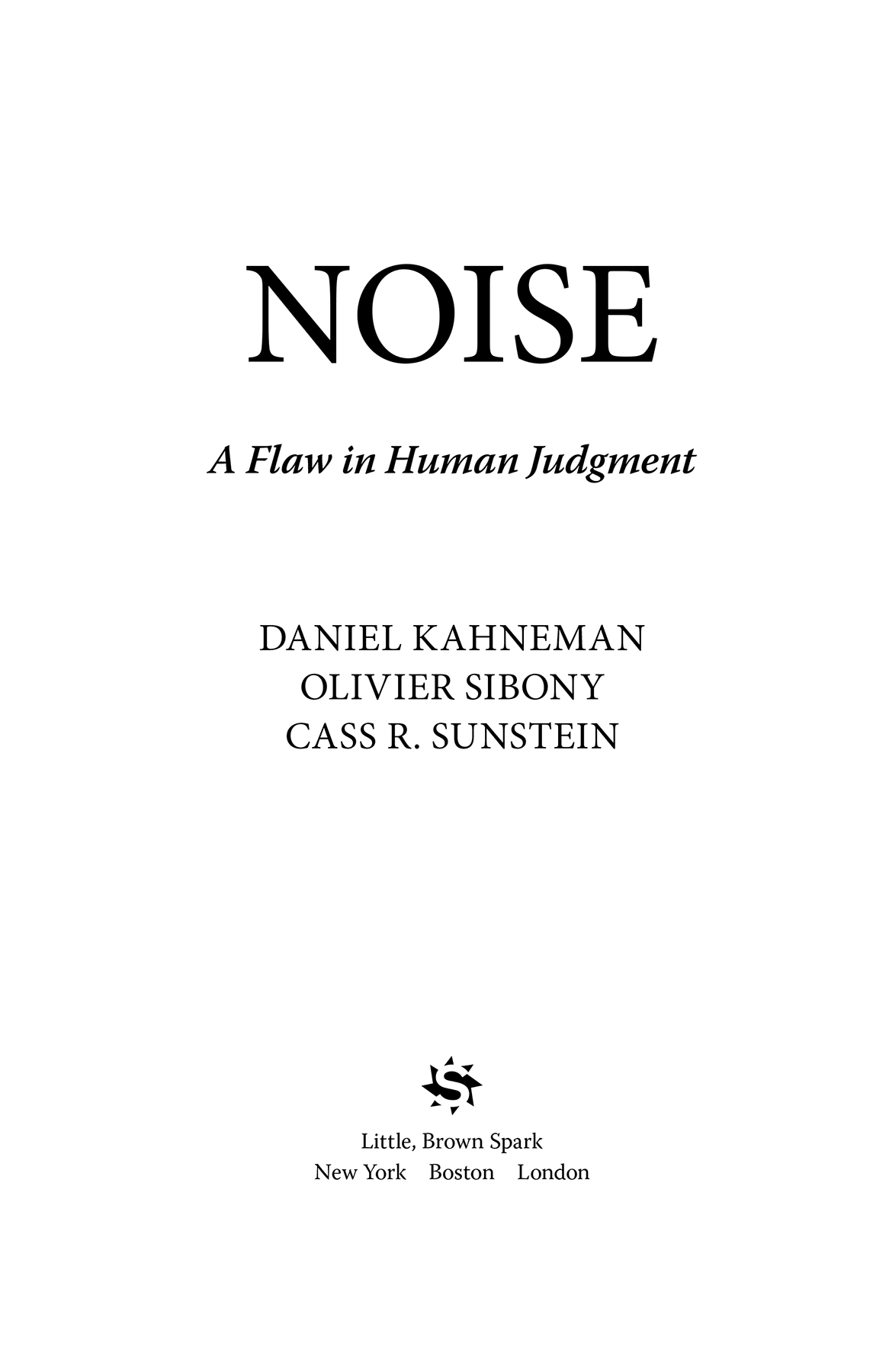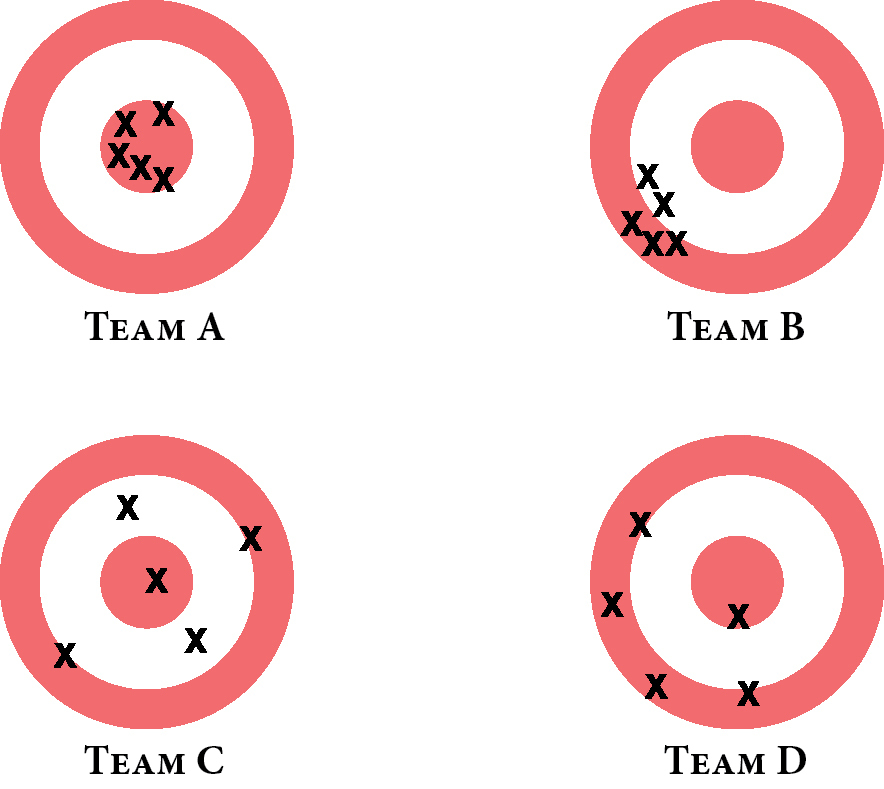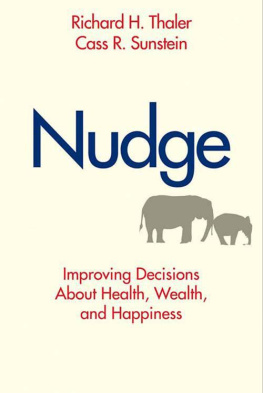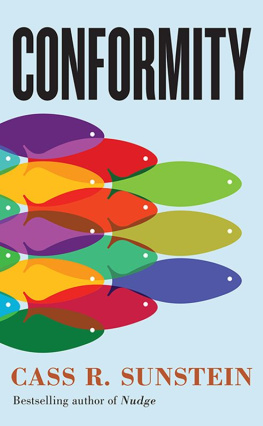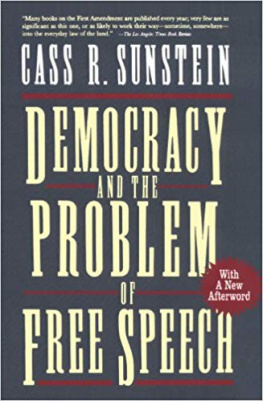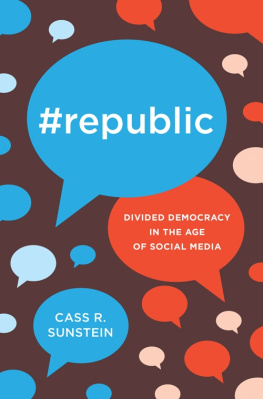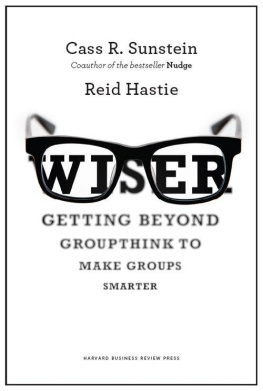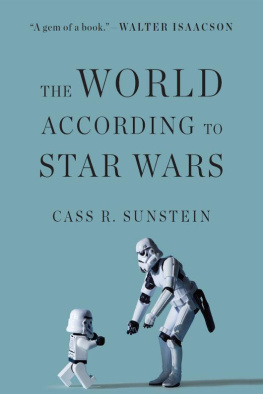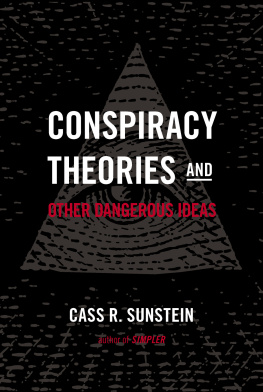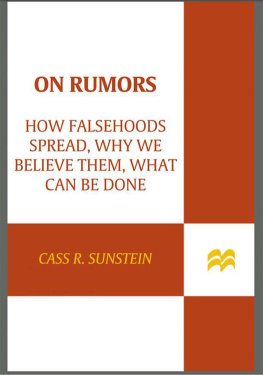Copyright 2021 by Daniel Kahneman, Olivier Sibony, and Cass R. Sunstein
Cover design by Julian Humphries
Cover photograph copyright Shutterstock
Cover copyright 2021 by Hachette Book Group, Inc.
Hachette Book Group supports the right to free expression and the value of copyright. The purpose of copyright is to encourage writers and artists to produce the creative works that enrich our culture.
The scanning, uploading, and distribution of this book without permission is a theft of the authors intellectual property. If you would like permission to use material from the book (other than for review purposes), please contact permissions@hbgusa.com. Thank you for your support of the authors rights.
Little, Brown Spark
Hachette Book Group
1290 Avenue of the Americas, New York, NY 10104
littlebrownspark.com
twitter.com/lbsparkbooks
facebook.com/littlebrownspark
Instagram.com/littlebrownspark
First ebook edition: May 2021
Little, Brown Spark is an imprint of Little, Brown and Company, a division of Hachette Book Group, Inc. The Little, Brown Spark name and logo are trademarks of Hachette Book Group, Inc.
The publisher is not responsible for websites (or their content) that are not owned by the publisher.
ISBN 978-0-316-45138-3
E3-20210415-JV-NF-ORI
Contents
For Noga, Ori and GiliDK
For Fantin and LliaOS
For SamanthaCRS
Explore book giveaways, sneak peeks, deals, and more.
Tap here to learn more.
I magine that four teams of friends have gone to a shooting arcade. Each team consists of five people; they share one rifle, and each person fires one shot. shows their results.
In an ideal world, every shot would hit the bulls-eye.
That is nearly the case for Team A. The teams shots are tightly clustered around the bulls-eye, close to a perfect pattern.
We call Team B biased because its shots are systematically off target. As the figure illustrates, the consistency of the bias supports a prediction. If one of the teams members were to take another shot, we would bet on its landing in the same area as the first five. The consistency of the bias also invites a causal explanation: perhaps the gunsight on the teams rifle was bent.
We call Team C noisy because its shots are widely scattered. There is no obvious bias, because the impacts are roughly centered on the bulls-eye. If one of the teams members took another shot, we would know very little about where it is likely to hit. Furthermore, no interesting hypothesis comes to mind to explain the results of Team C. We know that its members are poor shots. We do not know why they are so noisy.
Team D is both biased and noisy. Like Team B, its shots are systematically off target; like Team C, its shots are widely scattered.
But this is not a book about target shooting. Our topic is human error. Bias and noisesystematic deviation and random scatterare different components of error. The targets illustrate the difference.
The shooting range is a metaphor for what can go wrong in human judgment, especially in the diverse decisions that people make on behalf of organizations. In these situations, we will find the two types of error illustrated in . Some judgments are biased; they are systematically off target. Other judgments are noisy, as people who are expected to agree end up at very different points around the target. Many organizations, unfortunately, are afflicted by both bias and noise.
illustrates an important difference between bias and noise. It shows what you would see at the shooting range if you were shown only the backs of the targets at which the teams were shooting, without any indication of the bulls-eye they were aiming at.
From the back of the target, you cannot tell whether Team A or Team B is closer to the bulls-eye. But you can tell at a glance that Teams C and D are noisy and that Teams A and B are not. Indeed, you know just as much about scatter as you did in . A general property of noise is that you can recognize and measure it while knowing nothing about the target or bias.
F IGURE 2: Looking at the back of the target
The general property of noise just mentioned is essential for our purposes in this book, because many of our conclusions are drawn from judgments whose true answer is unknown or even unknowable. When physicians offer different diagnoses for the same patient, we can study their disagreement without knowing what ails the patient. When film executives estimate the market for a movie, we can study the variability of their answers without knowing how much the film eventually made or even if it was produced at all. We dont need to know who is right to measure how much the judgments of the same case vary. All we have to do to measure noise is look at the back of the target.
To understand error in judgment, we must understand both bias and noise. Sometimes, as we will see, noise is the more important problem. But in public conversations about human error and in organizations all over the world, noise is rarely recognized. Bias is the star of the show. Noise is a bit player, usually offstage. The topic of bias has been discussed in thousands of scientific articles and dozens of popular books, few of which even mention the issue of noise. This book is our attempt to redress the balance.
In real-world decisions, the amount of noise is often scandalously high. Here are a few examples of the alarming amount of noise in situations in which accuracy matters:
Medicine is noisy. Faced with the same patient, different doctors make different judgments about whether patients have skin cancer, breast cancer, heart disease, tuberculosis, pneumonia, depression, and a host of other conditions. Noise is especially high in psychiatry, where subjective judgment is obviously important. However, considerable noise is also found in areas where it might not be expected, such as in the reading of X-rays.
Child custody decisions are noisy. Case managers in child protection agencies must assess whether children are at risk of abuse and, if so, whether to place them in foster care. The system is noisy, given that some managers are much more likely than others to send a child to foster care. Years later, more of the unlucky children who have been assigned to foster care by these heavy-handed managers have poor life outcomes: higher delinquency rates, higher teen birth rates, and lower earnings.
Forecasts are noisy. Professional forecasters offer highly variable predictions about likely sales of a new product, likely growth in the unemployment rate, the likelihood of bankruptcy for troubled companies, and just about everything else. Not only do they disagree with each other, but they also disagree with themselves. For example, when the same software developers were asked on two separate days to estimate the completion time for the same task, the hours they projected differed by 71%, on average.

